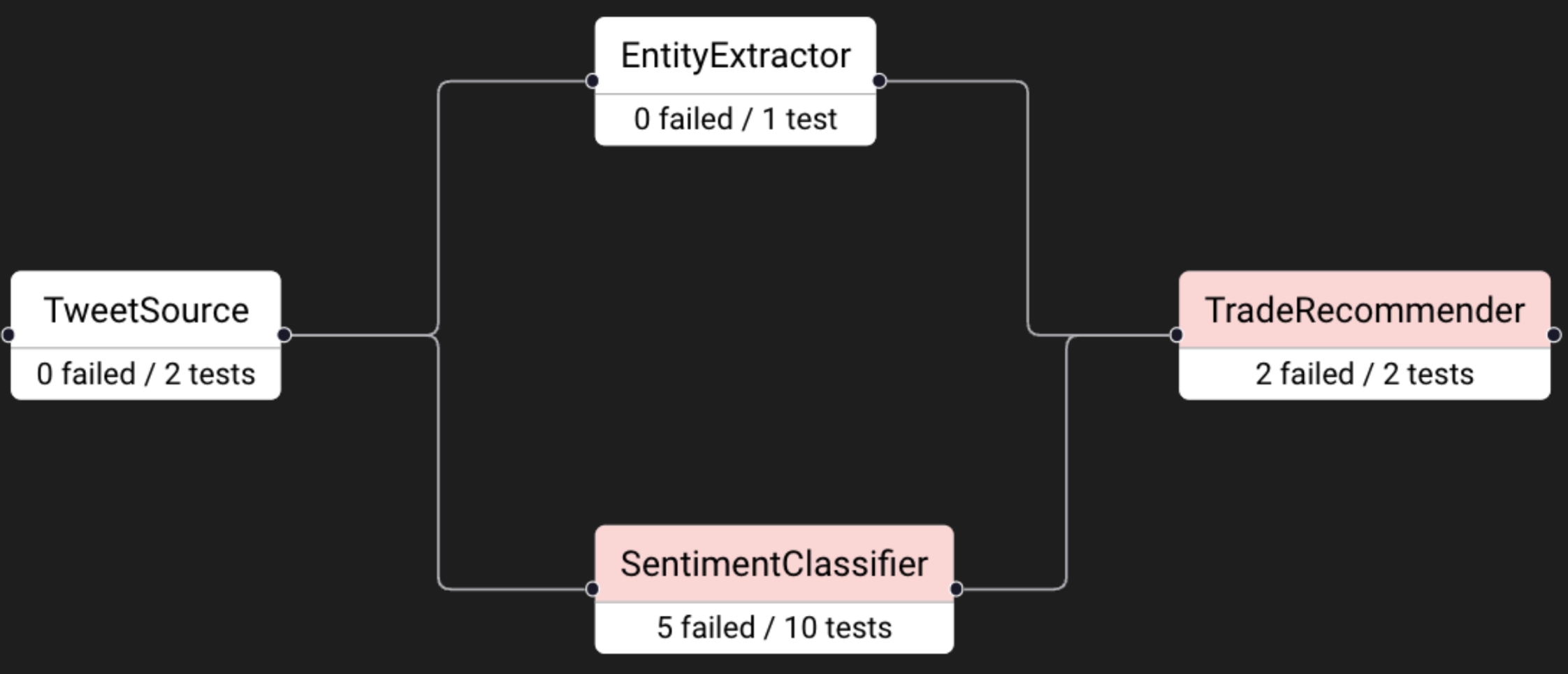Components and the DAG for root cause analysis
Distributional runs on data. When that data is well organized, Distributional can provide more powerful insights into your app’s behavior. One key way to do so is through defining components of your app and the organization of those components within your app.
Components are groupings of columns – they provide a mechanism for identifying certain columns as being generated at the same time or otherwise relating to each other. As part of your data submission, you can define that grouping as well as a flow of data from one component to another. This is referred to as the DAG, the directed acyclic graph.

In the example above, we see:
Data being input at TweetSource (1 column),
An EntityExtractor (2 columns) and a SentimentClassifier (4 columns) parsing that data, and
A TradeRecommender (2 columns) taking the Entities and Sentiments and choosing to execute a stock trade.
Tests were created to confirm the satisfactory behavior of the app. We can see that the TradeRecommender seems to be misbehaving, but so is the SentimentClassifier. Because the SentimentClassifier appears earlier in the DAG, we start our triage of these failed tests there.
To see more of this example, visit this tutorial.
Was this helpful?

